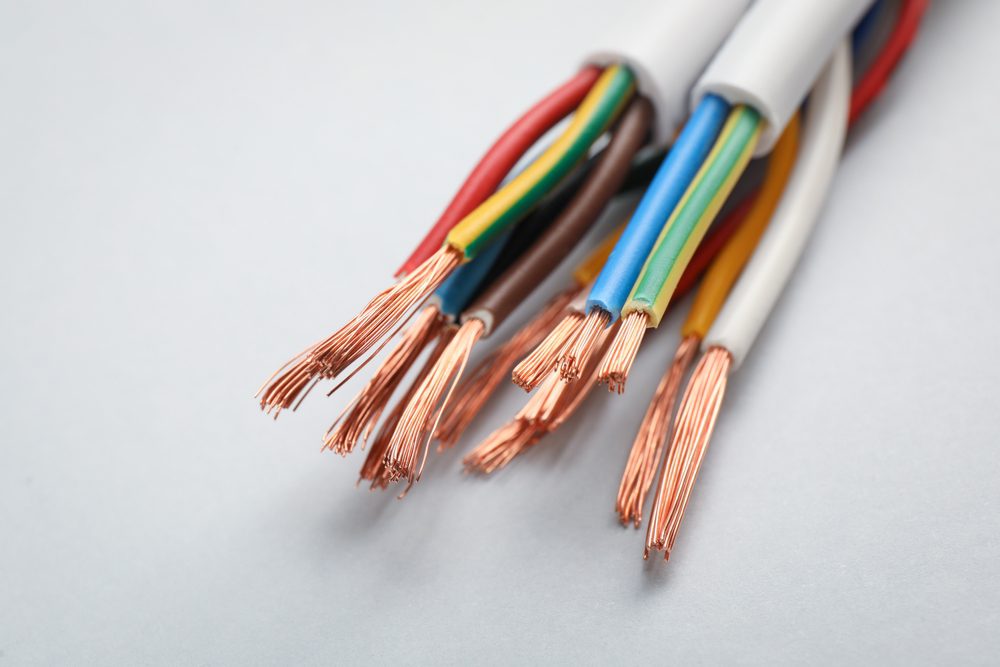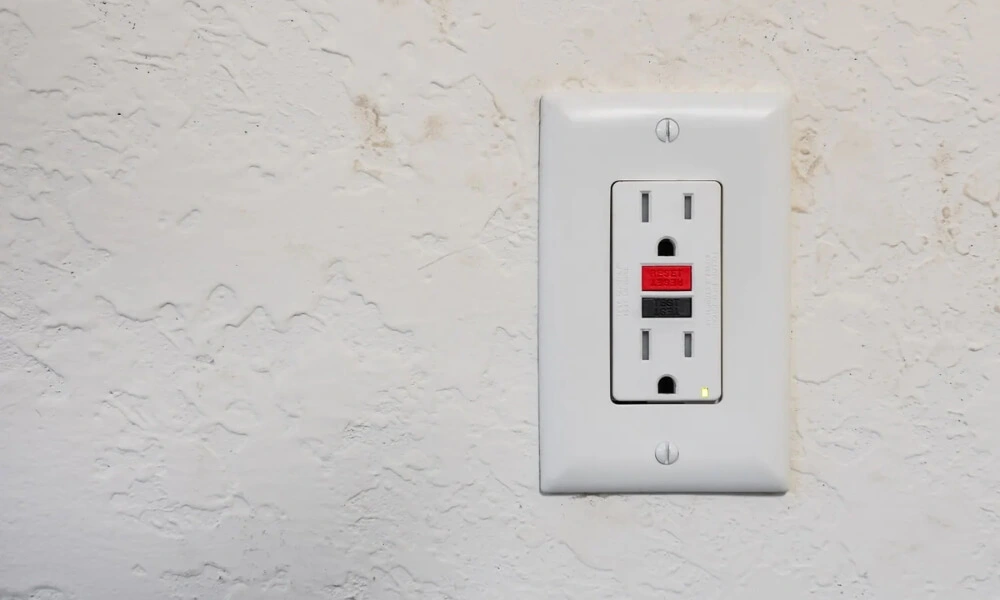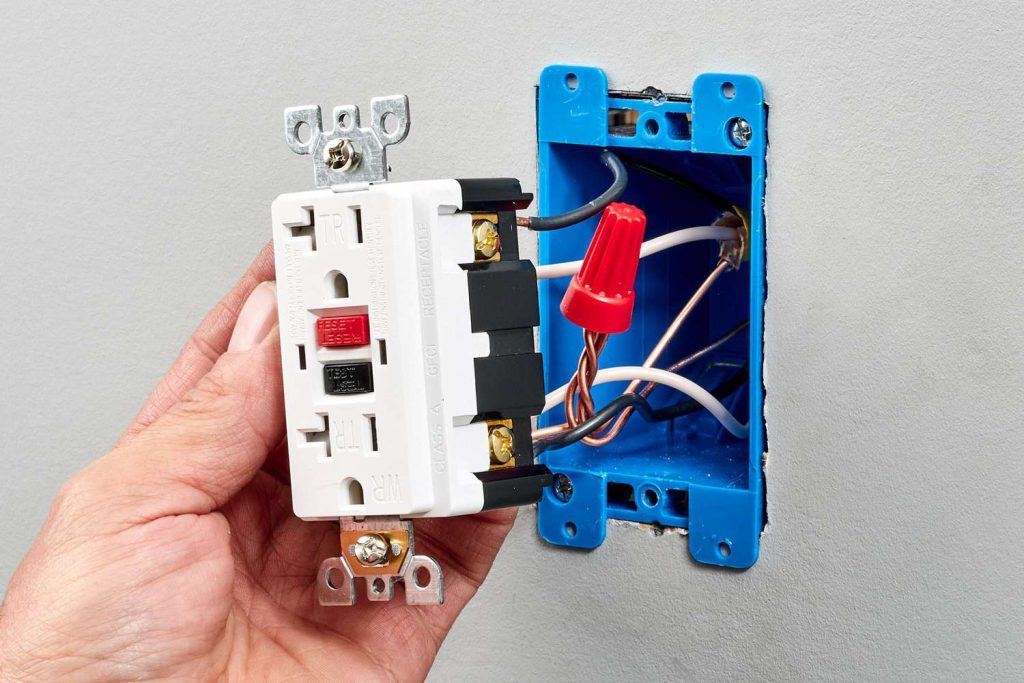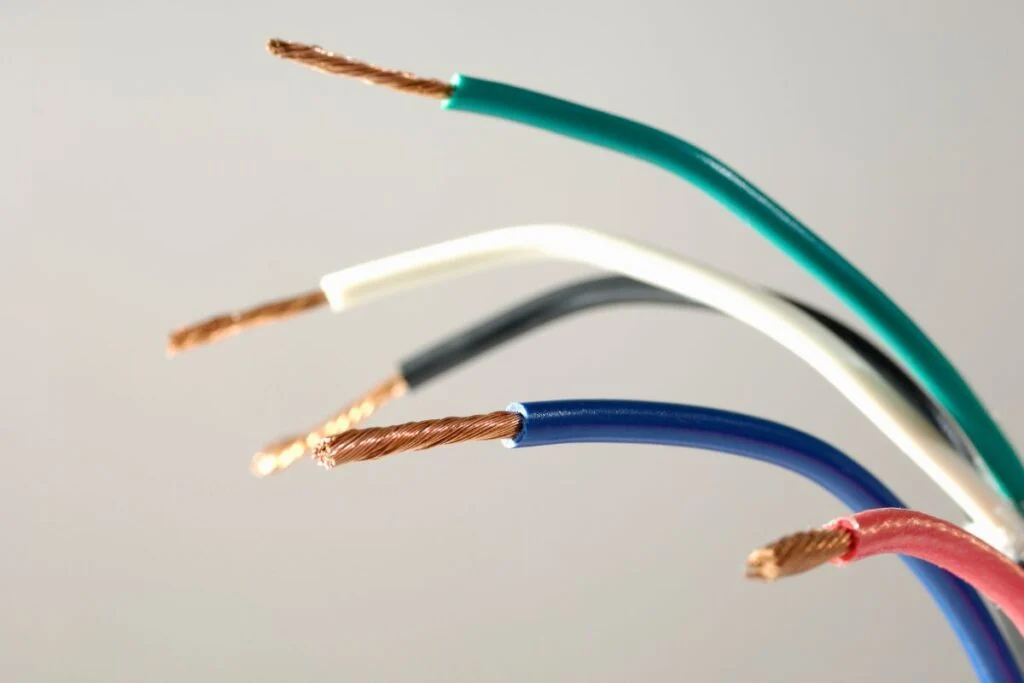Most homeowners have faced the challenge of installing a new light fixture or upgrading an outlet.
While these DIY electrical projects can save money, they also require a solid understanding of your home’s electrical system.
One crucial aspect that often confuses many is the difference between line and load wires.
I promise that by the end of this article, you’ll clearly understand line vs. load wires and how to identify them safely.
This knowledge will help you confidently tackle simple electrical projects and know when to call in a professional.
In this blog post, we’ll explore the definitions of line and load wires, their roles in your home’s electrical system, and how to tell them apart.
We’ll also discuss when it’s essential to differentiate between these wires and provide safety tips for working with electricity.
What are Line and Load Individually?
Line Wire

A line wire is the powerhouse of your electrical system.
It brings electricity from your main panel to devices around your home.
Think of it as the first stop on the electrical journey.
These wires are always “hot,” meaning they carry live currents.
You’ll often find them at the bottom of panels and devices.
While they’re usually black, please don’t rely on color alone to identify them.
It’s safer to use their position and testing tools for confirmation.
The line wire is your starting point when hooking up a new outlet or switch.
It connects directly to your electrical panel and is ready to power whatever you plug in.
Load Wire

Load wires are the next step in the electrical chain.
They take the power from one device and pass it to the next.
Unlike line wires, they’re not always hot – they only carry current when the circuit is active.
You’ll typically spot load wires at the top of panels and devices.
They can be red, black, or blue, but don’t trust color alone.
Their job is to keep the electricity flowing from one point to the next in your home.
A common example is the wire from a light switch to a ceiling fixture.
When you flip the switch, the load wire springs into action, lighting up your room.
When working with any wires, safety is key.
Always turn off the power at the breaker before you start.
Wear proper safety gear, too – electrical work is no place for bare hands.
As you work, label your wires clearly.
This simple step can save you headaches (and potential hazards).
And before you power everything back up, double-check all your connections.
It’s better to be safe than sorry when it comes to electricity.
Line vs Load: Why It Matters
Understanding the difference between line and load wires is about more than just electrical know-how—it’s about keeping you and your home safe.
Let’s break it down.
1. Safety

First, safety is key.
Line wires are always live, which means they’re constantly carrying electricity.
If you mix them with load wires, you risk a nasty shock or even worse.
It’s like playing with fire, but invisible and more dangerous.
Then there’s the matter of getting things to work right.
Your switches, outlets, and those important GFCI devices must be wired correctly to do their jobs.
If you swap lines and load wires, you might have a light switch that does nothing or a GFCI that won’t protect you from shocks.
2. GFCI and Safety Mechanisms

GFCIs are designed to cut power if there’s a problem, potentially saving your life.
But they can only do that if the line and load wires are connected properly.
Get it wrong, and you’re losing a crucial safety net.
Lastly, it’s not just about following rules for the sake of it.
Electrical codes exist to keep everyone safe.
When you wire things correctly, you’re not just avoiding potential fines—you’re ensuring the safety of your home for you and future owners.
In short, knowing the line from your load isn’t just for electricians.
It’s for anyone who wants to stay safe, keep their home running smoothly, and avoid turning a simple DIY project into a dangerous situation.
A little knowledge goes a long way in keeping you out of harm’s way.
Identifying Line vs Load Wires
Telling line wires from load wires is a must for safe electrical work.
Let’s look at some ways to spot the difference.
1. By Position

The easiest way to start is by checking where the wires are.
Line wires are usually at the bottom of panels and devices, while load wires are at the top.
For example, in your breaker panel, the power coming in (line) connects at the bottom, and the power going out (load) connects at the top.
But don’t rely on this alone. It’s a good starting point, but you should always double-check.
2. By Color

Colors can give you a hint, too. Usually, line wires are black.
Load wires are often red, black, or blue.
Here’s the catch – these colors aren’t set in stone.
Different electricians might use other colors.
So, while color is helpful, please don’t make it your only way of checking.
3. By Testing

The surest way to know is by testing. You can use a volt pen or a multimeter.
A volt pen is simple to use. Just bring it near the wire. If it lights up or beeps, you’ve found a live line wire.
A multimeter gives you more details.
Please set it to measure voltage, and touch one probe to the wire and the other to a ground point.
If you get a voltage reading, that’s a line wire.
Remember, safety comes first.
Always turn off the power before you start poking around. And even if you think it’s off, treat every wire as if it’s live until you’ve tested it.
In the end, it’s best to use all these methods together.
Check the position, look at the color, and then test to be sure.
It might take longer, but keeping yourself safe and your wiring correct is worth it.
Applications
1. General Electrical Wiring

Let’s start with the basics of home wiring.
Understanding line and load wires is key to getting your electrical system right.
Electricity flows through circuits in your home, starting from your main panel and branching out to all your outlets and fixtures.
When installing a standard outlet or switch, you must know which wire is which.
The line wire brings power to the device while the load wire carries it onward.
Getting this wrong can lead to problems, from outlets that don’t work to potential fire hazards.
Here’s a quick tip: Always treat wires as live, even if you think the power’s off.
It’s better to be extra careful than to get a nasty shock.
2. GFCI Outlets

Now, let’s talk about GFCI outlets.
You’ll find These special outlets in places like kitchens and bathrooms.
They’re designed to protect you from electric shocks by cutting off power if they detect a problem.
GFCI outlets are trickier to wire because they have an internal circuit breaker.
You’ll see terminals marked “LINE” and “LOAD” on these outlets.
The line terminals connect to the incoming power, while the load terminals can protect downstream outlets.
If you mix these up, the GFCI won’t work properly.
This means you could lose that vital protection against electric shocks.
Always follow the manufacturer’s instructions carefully when installing these outlets.
3. Other Devices
Line and load wiring is more important than outlets.
It’s also important for other devices, like dimmers and light fixtures.
Each has specific wiring needs, but the basic principle is the same: power comes in on the line wire and goes out on the load wire.
For example, with a dimmer switch, the line wire connects to one terminal, and the load wire goes to the light fixture.
If you get this wrong, your dimmer will not work—or worse, it could be a safety hazard.
Understanding line and load can help you troubleshoot if you’re having electrical issues.
A device not working could mean the line and load wires are swapped.
But remember, if you’re unsure what you’re doing, it’s always best to call in a pro.
Electrical work can be dangerous if you’re not trained.
In the end, getting your line and load wires right is crucial, whether working on a simple outlet or a complex lighting system.
It keeps your home safe and your electrical devices working as they should.
When in doubt, don’t hesitate to consult an electrician. It’s always better to be safe than sorry when it comes to electricity.
Best Practices for DIY Repairs
Let’s talk about how to stay safe when you’re doing electrical work at home.
Follow these steps, and you’ll be on the right track.
1. Pre-repair Checklist
First things first, turn off the power.
Go to your breaker box and switch off the circuit you’ll be working on.
Don’t just assume it’s off – use a circuit tester to ensure. It’s better to double-check than to get a shock.
Next, gather your tools. You’ll need a voltage tester and a multimeter.
These aren’t just fancy gadgets – they’re your safety net.
They’ll help you identify live wires and check if everything’s connected.
Take some time to learn how to use these tools properly.
2. During Installation
When you’re in the thick of it, keep things clear. Mark your line and load wires.
You can use tags or colored tape.
This might seem like extra work, but it’ll save you headaches (and potential hazards) later on.
Before you wrap up, double-check all your connections.
Make sure everything’s tight and well-insulated. Loose wires can cause short circuits or even fires.
Reviewing your work against a reliable guide is worth taking an extra minute.
3. Post-installation Checks
Once you think you’re done, it’s time to test.
Turn the power back on and check each device on the circuit.
Flip switches, plug things in, and make sure everything works as it should.
Use your multimeter to check the voltage at different points for extra peace of mind.
This ensures the power is flowing where it should be.
If you’ve installed a GFCI outlet, perform a ground fault test to ensure it will protect you when needed.
Common Mistakes and How to Avoid Them
1. Mixing Up Line and Load Wires
This is the biggest no-no in electrical work.
Swapping these wires can make your devices go haywire and put you at risk.
Here’s how To Avoid This Mistake:
First, label your wires. Use tags or colored tape to mark which is which. It might seem like extra work, but it’s worth it.
Always check the manual. Each device might have its quirks, so follow the instructions closely.
Remember the general rule: line wires are usually at the bottom of panels, and load wires are at the top. But don’t rely on this alone.
2. Ignoring Color Codes
Wire colors aren’t just for show. They’re there to help you, so use them.
Don’t just go by where the wire is. Learn the basic codes.
Black is usually for line wires, while red or black can be load wires. It’s not foolproof, but it’s a good start.
If you’re unsure, use colored tape to mark the wires yourself. This can save you a lot of confusion later.
Always double-check against your panel’s diagram. It’s the most reliable guide you have.
3. Not Using Proper Testing Tools
Guessing whether a wire is live is a recipe for disaster.
It would be best to have the right tools to stay safe.
Invest in a good volt pen or multimeter.
They’re not expensive, and they could save your life.
Always test wires before you touch them, even if you think the power is off.
It’s better to be sure than sorry. Read the instructions for your testing tools.
Each works differently, and using them incorrectly can give you false readings.
Remember, these mistakes are common because they’re easy to make.
But they’re also easy to avoid if you carefully follow these steps.
Take your time, double-check everything, and don’t hesitate to ask for help if you’re unsure.
Regarding electricity, it’s always better to be safe than sorry.
When to Call a Professional
Let’s face it – sometimes DIY isn’t the way to go.
Here’s when you should pick up the phone and call in an expert.
1. Complex Installations
If you’re doing major renovations or building a new home, get a pro involved.
They know how to ensure your electrical system fits the big picture.
Are you installing high-voltage appliances?
That’s another job for the experts. Precise wiring is also required for HVAC systems, electric ovens, and water heaters.
Get it wrong, and you could be looking at serious damage or danger.
And if you’re dealing with fancy setups like multi-way switches or custom lighting, it’s best to leave it to someone who knows the ins and outs.
These systems need to be balanced just right to avoid overloads.
2. Uncertainty in Identifying Wires
If you’re staring at a bunch of wires and can’t tell which is which, it’s time to call for help.
Pros have the tools and know-how to figure it out safely.
They also know how to use specialized equipment like multimeters and voltage testers.
These aren’t toys – using them wrong can give you false readings and lead to dangerous mistakes.
Grounding is another tricky area, especially in older homes.
A pro can ensure everything’s properly grounded, which is crucial for safety.
3. Ensuring Compliance with Local Electrical Codes
Electrical codes can be a maze, and they change often.
Professionals keep up with these changes, so you don’t have to.
Some work needs permits and inspections.
A pro can handle all that paperwork and ensure your work passes muster with the authorities.
Plus, when you hire a professional, you often get a warranty.
That means peace of mind and protection for your investment.
Ultimately, calling a professional isn’t just about avoiding work – it’s about staying safe and doing things right.
It’s better to make that call if you’re ever in doubt. Your home (and your family) will thank you for it.
Conclusion
Understanding line and load wires is essential for safe and effective electrical work.
We’ve covered their definitions, importance, identification methods, and common applications.
We’ve also discussed best practices for DIY repairs and when to call in professionals.
Remember, line wires bring power in, while load wires distribute it.
This distinction is crucial for safety and functionality. Always use multiple methods to identify wires, and never rely solely on color or position.
The principles remain the same whether you’re working on a simple outlet or a complex GFCI installation.
Always prioritize safety, use proper tools, and double-check your work.
While DIY can be rewarding, don’t hesitate to call a professional for complex tasks or when unsure.
Your safety and your home’s integrity are paramount.
With this knowledge, you’re better equipped to handle basic electrical tasks and know when to seek expert help.











